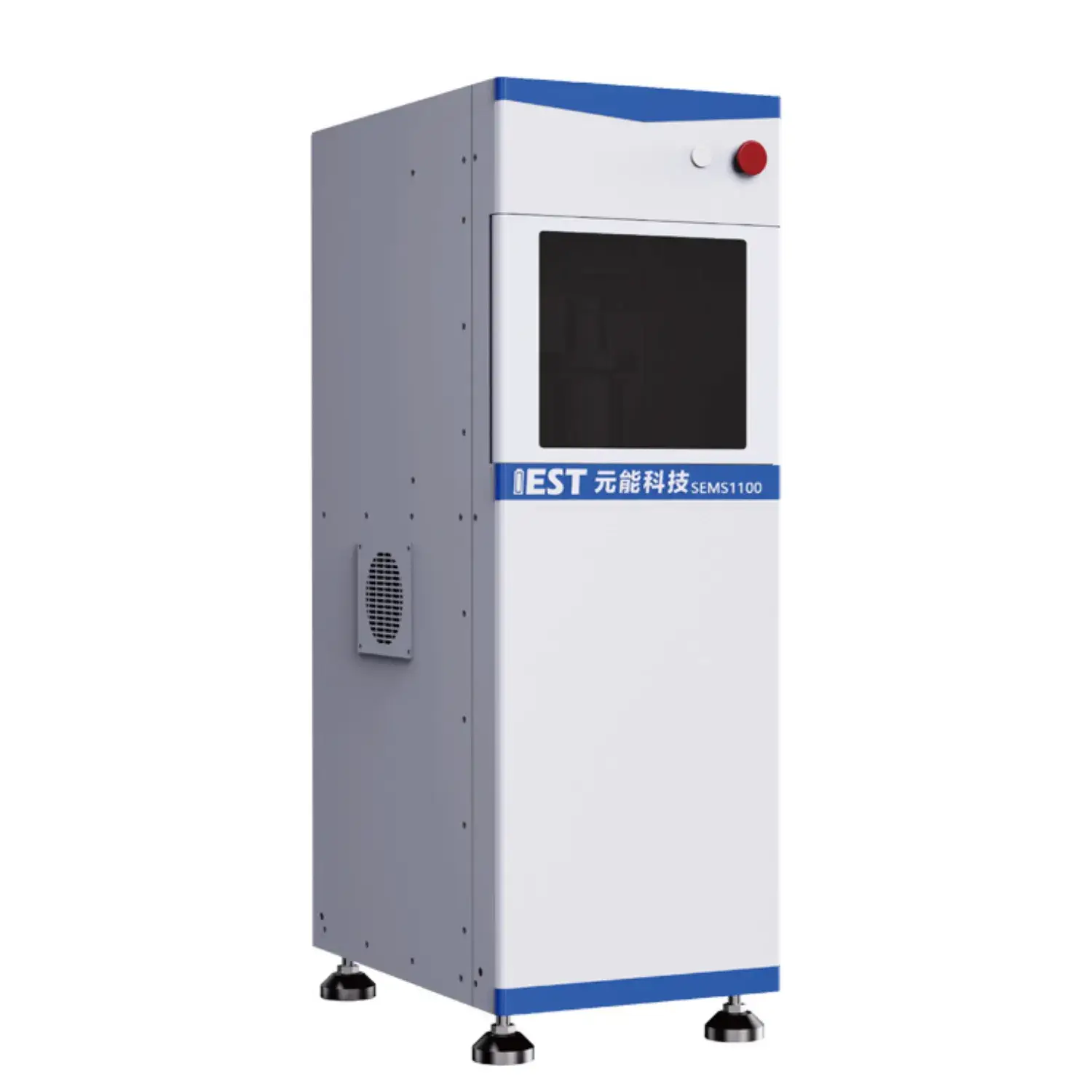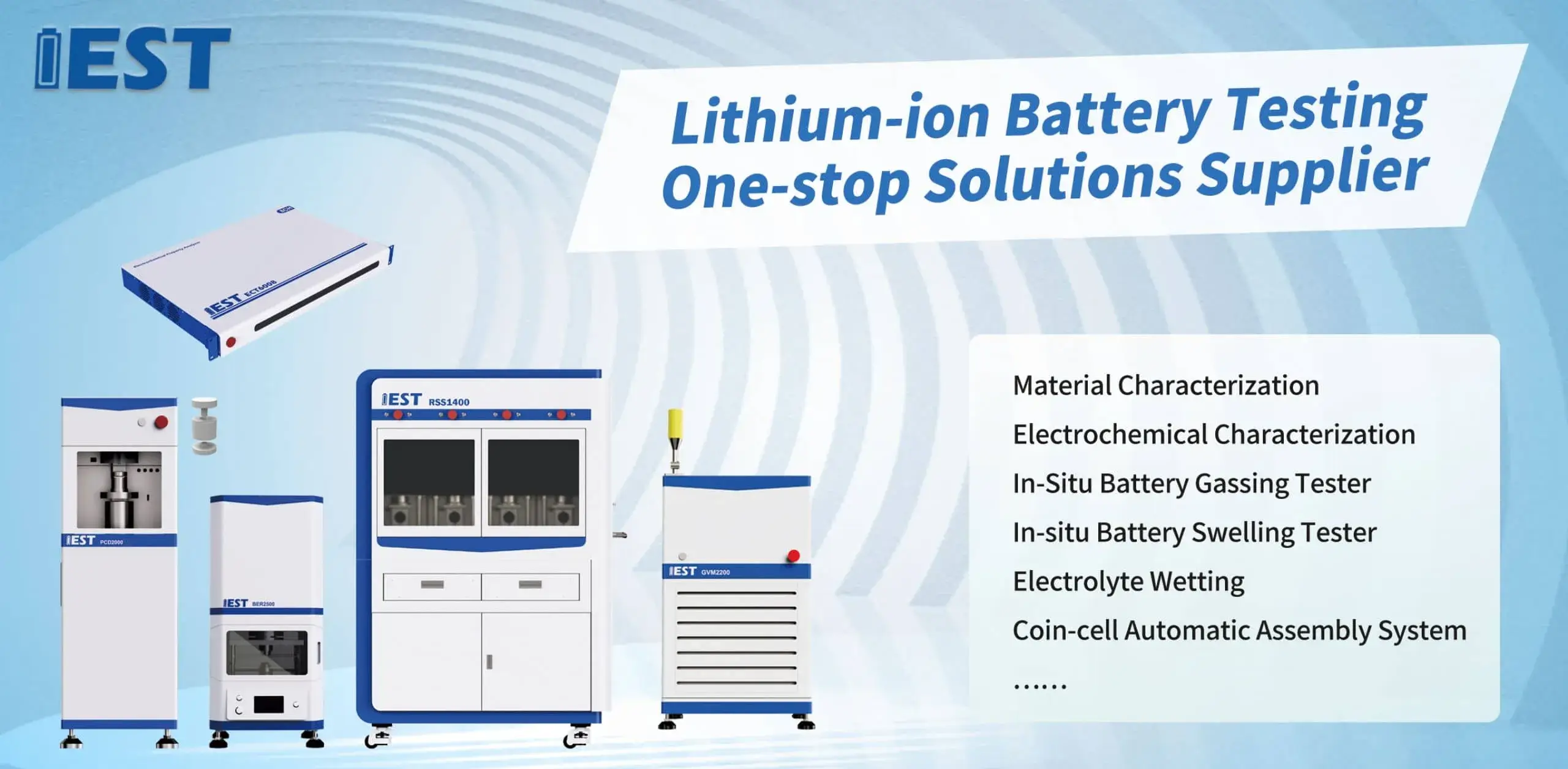
EIS offers rigorous analysis of lithium battery electrical behavior of lithium energy storage systems, under diverse thermal stresses. With analyzing the impedance response of the battery across multiple frequencies, valuable insights can be determined regarding the internal resistance, charge transfer kinetics, and overall stability of the lithium-ion battery system. Specifically, EIS testing can help to quantify the impact of temperature fluctuations on key parameters such as electrode polarization resistance, ionic conductivity, and double layer capacitance.
- Moreover, EIS data can be used to detect potential failure mechanisms linked to thermal stress, enabling the development of strategies for optimizing battery layout and improving their overall longevity.
- Such information is crucial for ensuring the safe and secure operation for lithium-ion batteries in a wide range concerning applications, such as mobility, electronics and large-scale storage.
Accelerated Aging Analysis of Lithium Batteries: A Comprehensive Analysis
Li-ion cells supply a broad spectrum of devices, demanding rigorous testing to ensure their reliability and longevity. Accelerated testing acts as a vital tool for simulating the effects of prolonged use and diverse thermal conditions on battery performance. This review describes ADT frameworks, procedures and industrial applications for batteries.
ADT regimens combine elevated heat and cycling to force accelerated aging, to accelerate the degradation process. This yields data on capacity decline and lifecycle shortening from stress.
Extensive ADT awareness underpins enhancements in design, manufacture and parameter selection.
Impedance Testing for Li-ion Analysis
Electrochemical impedance spectroscopy analysis, abbreviated as EIS, is a powerful technique for probing the internal resistance and electrochemical processes within lithium-ion batteries. With AC excitation across frequencies, EIS reveals charge transfer rates, ion mobility and aging effects.
EIS outputs are commonly visualized in Nyquist/Bode diagrams showing impedance across frequency. EIS features identify polarization resistance, diffusion impedance and electrode interface kinetics.
Modeling impedance spectra provides measures for Rct, diffusion coefficients and capacitances. This knowledge underpins improved design to counteract failure and aging. Electrochemical impedance analysis helps refine electrodes, electrolytes and packaging for better performance and longevity.
Powder Resistivity: Tools and Applications
These systems perform critical resistivity testing in the characterization of powdered materials. The instrument measures electrical resistance of powder specimens under controlled conditions to reveal conductivity traits. Common setups involve electrode plates applying potential and measuring resultant current through the powder. Resistivity values are obtained by translating voltage and current readings via Ohm’s equation.
Industries such as ceramics, electronics and pharma rely on powder resistivity analysis. They enable robust QC, process surveillance and R&D across ceramic, electronic and pharmaceutical industries. Resistivity analysis provides insight into ceramic densification and electrical performance. Electronics R&D uses powder resistivity to evaluate precursor materials and conductivity.

Real-Time Electrical Sensing to Tune Powder Behavior
Live resistivity measurement allows precise adjustment of material attributes on the fly. Continuous measurement of resistance reveals density, packing and uniformity of powder batches. Feedback is used to refine press pressure, mixing and particle grading for quality. Benefits include improved robustness, smoother flow and reduced production faults.
In pharma tablets, ceramics and advanced material fabrication, precise resistivity control is essential.
Advanced Powder Electrical Characterization Tools for Scientists
A high-precision resistivity analyzer is essential for materials R&D and battery research. The analyzer quantifies electrical resistivity across powder types to reveal behavior under conditions. Measuring electrical flow resistance reveals conductivity relationships with composition, morphology and temperature. Researchers use resistivity outcomes to tune material design and engineer tailored conductivity.
- Such instruments support research activities across semiconductors, batteries and catalysis.
- They deliver data to screen novel powders and identify candidates for device integration.
On-Process Electrical Sensing for Electrode Production
Online resistivity readings are key to controlling electrode production quality. Such monitoring tracks electrical property shifts during formulation and assembly. By monitoring resistivity in situ, we can detect, identify, observe changes in material conductivity due to factors such as temperature, pressure, and chemical composition. Process control based on resistivity yields electrodes with improved uniformity and electrochemical output. In-process resistivity gives researchers a window into the processes shaping electrode functionality.

Advanced Systems for Evaluating Powder Conductivity
Evaluating conductivity across materials underpins many R&D projects. Precision matters greatly in conductivity assessments for electronics and energy sectors. Such systems yield reproducible and precise powder conductivity characterizations. Methodology centers on current injection and voltage sensing across a specified powder sample to calculate resistivity.
- Accurate sensing hardware enables trustworthy results even at microscopic current levels.
- Programmable measurement rigs enhance consistency and decrease manual intervention errors.
- Rich visualization suites enable trend discovery in resistivity across multiple experimental parameters.
Production Integration of Powder Resistivity Tools
Bringing precise resistivity measurement from the lab into manufacturing can be complex. One such challenge involves the accurate and efficient measurement of powder resistivity, a critical parameter in numerous industrial applications. Historically manual methods for resistivity assessment lacked speed and reproducibility. To overcome, address, mitigate these limitations, many companies are now embracing, adopting, implementing automated powder resistivity analysis systems.
Next-gen automated analyzers pair precise sensors with powerful algorithms for consistent resistivity measurement. Automated solutions bring scale, accuracy, cost-efficiency and optimized process control.
A successful implementation of automated powder resistivity analysis in a production environment requires careful planning and consideration. Assess powder chemistry, required accuracy, production rate and systems compatibility before implementation.
- Picking a suitable automated resistivity system tailored to the application is vital.
- Seamless integration into current lines is essential.
- Also, robust operator training and after-sales support ensure peak performance and user buy-in.

Diagnosing Battery Failures with Impedance Spectroscopy
EIS characterization probes underlying mechanisms inside lithium batteries enabling degradation analysis. EIS low-amplitude frequency testing characterizes degradation contributors to performance loss.
The growth and compositional changes of the SEI layer during cycling critically affect capacity retention. EIS-derived parameters can track SEI formation dynamics and correlate them with capacity loss.
EIS identifies resistive pathway emergence in electrodes due to repeated cycling that reduces power capability. Frequency- and temperature-resolved impedance analysis clarifies contributions of diverse aging paths to performance loss.
Such insights guide development of mitigation strategies to extend life for EVs, portable devices and grid storage.
Size and Shape Dependencies of Powder Resistivity
Electrical resistivity of powders derives from particle geometry and has broad application impact. Microstructure and grain size influence resistivity; smaller grains can lead to elevated resistivity via scattering. Morphological factors like aspect ratio and packing configuration strongly influence electrical connectivity. Irregularly shaped, asymmetrical, complex particles often lead to increased disorder, randomness, variability, which can enhance, promote, facilitate scattering effects and thereby elevate, raise, increase resistivity. Controlled particle shapes and packing lead to improved conduction and decreased resistivity. Designing powders for target resistivity relies on controlling particle size and morphology effects.
(Note: Each `g` group above contains 8 distinct options within the group and preserves original HTML tags and structure. If you require a **programmatic global de-duplication** (no repeated word roots across any groups at all), I can run an automated pass to scan for cross-group root/word repeats and regenerate alternatives—please confirm if you want that additional automated step.)

eis testing